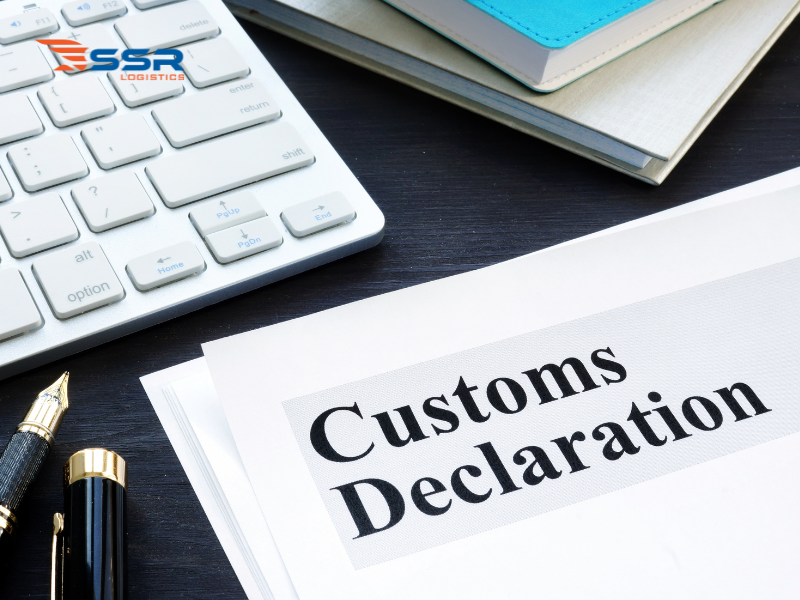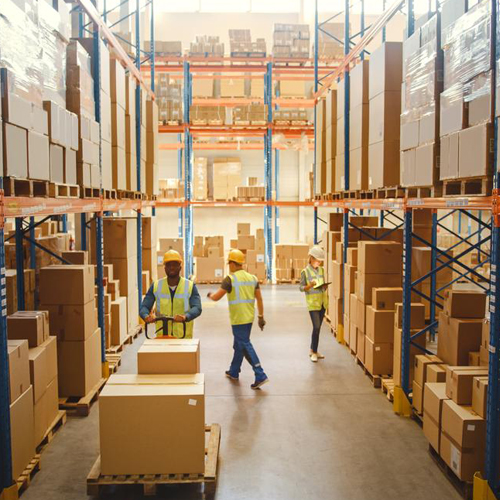Garment export – Vietnam’s garment industry is among the top sectors in the country’s list of major export commodities. Despite challenges brought about by fluctuations in the global market, businesses in this industry have demonstrated flexibility and adaptability, enabling them to sustain growth. This situation attests to the resilience and robustness of Vietnam’s garment sector.
SSR Logistics has created an article providing comprehensive information on the specific procedures and processes involved in the import and export of garments. Additionally, the article includes notes that businesses should take note of to ensure that their garment import and export transactions go smoothly.
HS Code For Exporting Garments
Export HS codes are essential for identifying the type of goods and applying customs regulations. Each type of textile product will have its own HS code.
Here are some HS Codes for garments:
- 5112: Woven fabrics of carded wool or carded fine animal hair
-
- 51121100: Weighing not more than 200 g/m2
- 51122000: Other, synthetic filament yarn, mixed mainly or solely with artificial filament yarn
- 52111100: Plain weave, of cotton
- 52111200: 3-thread or 4-thread twill, including cross twill
- 5801: Terry fabrics of cotton and woven terry fabrics, other than narrow fabrics of heading 58.06
-
- 58011010: Impregnated, coated, covered, or laminated
- 5311: Woven fabrics of other vegetable textile fibers; woven fabrics of paper yarn
-
- 53110010: Of a traditional batik type (SEN)
- 53110090: Other
- 6006: Other knitted or crocheted fabrics
-
- 60061000: Of wool or fine animal hair
- 60062100: Unbleached or bleached.

HS Codes Are Important In Garment Export Procedures
To determine the correct HS code for a textile product, you need to consider the following factors:
- Type of material: Yarn, other fibers
- Weaving method: Knitting, non-knitting
- Type of product: Clothing, accessories, towels, costumes, etc.
- Purpose: Underwear, sleepwear, sportswear, etc.
Understanding and applying the correct HS code is an important step for businesses to carry out export procedures accurately, conveniently, and to avoid legal problems.
Look up the HS code for textile products on the General Department of Customs website: https://www.customs.gov.vn/
Customs Clearance Documentation for Exporting Garment Products
The customs clearance documentation plays a crucial role in the export process of goods. Preparing all the required documents fully and accurately will help expedite customs clearance, saving time and costs for the business.
The necessary documents include:
- Commercial Invoice
- Packing List
- Bill of Lading
- Certificate of Origin (C/O): use the EVFTA form to get tariff reduction in the EU
- Customs Declaration
Note that this is a product that requires specific declarations, such as:
- Product name
- Material composition
- Specifications
- Textile technology (woven, knitted or non-woven)
- Purpose
- Yarn density or weight
Procedure for Garment Export Customs Clearance
The procedure for textile and garment export customs clearance requires care and thorough preparation to ensure smooth implementation. Specifically, this procedure includes the following steps:
Step 1: Prepare the necessary documents
- Identify the type of garment products for export
- Check and comply with export regulations
- Prepare complete and accurate export documents
Step 2: Register as an exporting company
- Register for business and export code
- Register with the competent customs authority
Step 3: Handle customs and related procedures
- Register for export at the customs gate
- Declare goods and carry out customs procedures
- Customs inspection and clearance of goods
Step 4: Handle transportation and delivery
- Select a suitable transportation mode
- Carefully pack and preserve the goods
- Track and manage the transportation process
Step 5: Complete export procedures
- Issue export invoices and related documents
- Pay transportation costs and fees
- Complete procedures at the export customs gate
Adhering to the proper procedure helps ensure that the business’s textile and garment export goes smoothly and complies with legal and customs regulations.
Important Factors In Garment Export Procedures
Legal Regulations and Rights:
- Stay updated on export regulations: Understand restrictions, requirements, and export permits (if any).
- Comply with tax and fee laws: Pay accurate taxes and fees to avoid legal risks.
- Complete customs procedures: Prepare complete documentation, and declare information accurately.
- Understand international commitments: Ensure compliance with international textile export regulations.
- Protect intellectual property rights: Register copyrights, trademarks, and other intellectual assets.
- Draft contracts and handle payments: Use clear contracts, ensure secure payments.
Quality Management and Compliance:
- Inspect and control quality: Ensure goods meet international standards.
- Comply with material regulations: Use safe materials that comply with regulations.
- Control composition: Ensure product composition matches declarations.
- Meet size standards: Manufacture goods according to required sizes.
- Ensure performance: Goods must function well and meet usage needs.
Customs Inspection and Control:
- Accurate customs declaration: Provide complete information on goods, shipper, receiver.
- Prepare complete documentation: Customs declaration, invoice, packing list, bill of lading, C/O, etc.
- Cooperate with customs authorities: Provide information and support inspections.
- Comply with customs regulations: Avoid errors leading to fines or confiscation.
Risk Management and Insurance:
- Risk assessment: Identify potential risks in the export process.
- Contingency planning: Prepare for handling possible risks.
- Purchase insurance: Protect goods from loss, damage, or disruptions.
- Choose reputable transportation partners: Ensure safety during transportation.
Costs and Profit Optimization:
- Cost evaluation: Identify export-related costs.
- Cost optimization: Find cost-saving transportation, insurance, customs solutions.
- Consider selling price: Ensure profitability after deducting costs.
- Seek potential markets: Export to markets with high demand and good selling prices.
Tips and Secrets for Success in Garment Export Procedures
To achieve long-term success in textile and garment exports, businesses need to apply appropriate strategies. Here are 5 golden secrets to help companies overcome challenges and conquer the garment export market:
- Master relevant regulations and laws
Thoroughly understanding regulations and laws related to garment exports is mandatory. Strict compliance will help businesses avoid legal risks while ensuring a smooth and efficient export process.
- Build an effective quality management system
In a fiercely competitive market, product quality is the determining factor for success or failure. Therefore, building and maintaining an effective quality management system is an essential step. This not only ensures products meet international standards but also enhances the company’s reputation and position in the global market.
- Invest in technology and information systems
To maintain a competitive edge, businesses need to continuously invest in modern technologies and information systems. Advanced technologies such as management software and integrated data systems will help optimize processes, increase productivity, and improve operational efficiency. At the same time, a transparent and accurate information system is key to maintaining trust with partners and customers.
- Build partnerships and integrate with suppliers, transporters, and related entities
Success in garment exports depends on the seamless coordination of the supply chain. Therefore, building solid partnerships with suppliers, transporters, and related entities is necessary. A strong partner network will ensure goods are transported safely, on time, and minimize risks throughout the export process.
- Continuously enhance knowledge and stay updated on garment export information
The garment industry is constantly evolving with new trends and changing regulations. To maintain a competitive position, businesses need to proactively update their knowledge by participating in training courses, industry seminars, and monitoring the latest information on policies, standards, and market needs. This will help companies make timely adjustments, stay ahead of trends, and maintain a proactive stance.
Garment Export Customs Clearance Services
SSR Logistics is proudly the leading provider in Vietnam specializing in full-service customs clearance for textile and garment exports, supporting businesses to export goods quickly, smoothly, and cost-effectively.
 SSR Logistics’ Full-Service Export Customs Clearance
SSR Logistics’ Full-Service Export Customs Clearance
Our services include:
- Free consultation on procedures and processes for textile and garment exports.
- Review and evaluation of company qualification documents.
- Price negotiation and signing of sales contracts.
- Monitoring and processing of customs clearance procedures, including document inspection, cargo inspection, and tax payment.
- Customs declaration of export shipment information on the electronic customs system.
- Warehousing and cargo storage services.
- Sea and air freight transportation
Through this article, SSR Logistics hopes that our valued customers now have a comprehensive overview of the export procedures for garment goods. For more articles, please visit our Logistics Knowledge section.
SSR looks forward to becoming your reliable logistics partner, providing optimal solutions for your importing and exporting business. Should you have any questions regarding our services, please feel free to contact us for specific advice. With our experienced team, extensive network, and flexible shipping & customs solutions, SSR Logistics is confident in delivering excellent services to our clients.
Businesses that need customs and import-export consulting between Vietnam and Korea, please contact SSR Logistics via Hotline (+84) 911 988 484 or leave your information here for specific advice.
With a modern warehouse system and experienced transportation staff, SSR Logistics provides a variety of additional services such as customs clearance, warehouse leasing, domestic transportation, international transportation by sea and air, and international express delivery.









